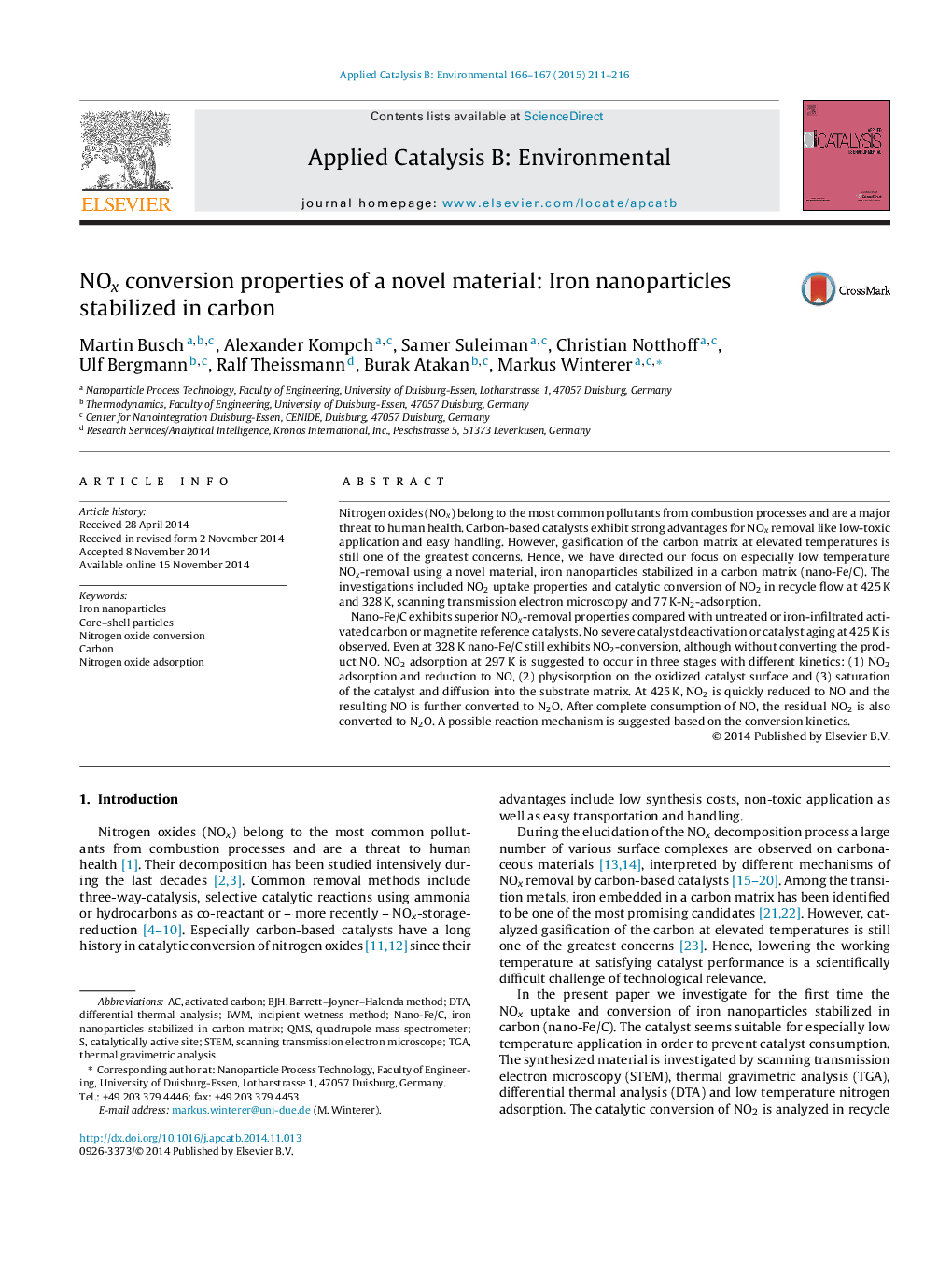| کد مقاله | کد نشریه | سال انتشار | مقاله انگلیسی | نسخه تمام متن |
|---|---|---|---|---|
| 45712 | 46421 | 2015 | 6 صفحه PDF | دانلود رایگان |

• We analyzed the catalytic NOx conversion properties of novel iron nanoparticles stabilized in carbon matrix.
• The material exhibits superior NOx conversion compared with iron-infiltrated activated carbon.
• The adsorption of NO2 at 297 K occurs in three stages with different kinetics.
• At 425 K NO2 and intermediately formed NO are completely converted into less harmful N2O.
Nitrogen oxides (NOx) belong to the most common pollutants from combustion processes and are a major threat to human health. Carbon-based catalysts exhibit strong advantages for NOx removal like low-toxic application and easy handling. However, gasification of the carbon matrix at elevated temperatures is still one of the greatest concerns. Hence, we have directed our focus on especially low temperature NOx-removal using a novel material, iron nanoparticles stabilized in a carbon matrix (nano-Fe/C). The investigations included NO2 uptake properties and catalytic conversion of NO2 in recycle flow at 425 K and 328 K, scanning transmission electron microscopy and 77 K-N2-adsorption.Nano-Fe/C exhibits superior NOx-removal properties compared with untreated or iron-infiltrated activated carbon or magnetite reference catalysts. No severe catalyst deactivation or catalyst aging at 425 K is observed. Even at 328 K nano-Fe/C still exhibits NO2-conversion, although without converting the product NO. NO2 adsorption at 297 K is suggested to occur in three stages with different kinetics: (1) NO2 adsorption and reduction to NO, (2) physisorption on the oxidized catalyst surface and (3) saturation of the catalyst and diffusion into the substrate matrix. At 425 K, NO2 is quickly reduced to NO and the resulting NO is further converted to N2O. After complete consumption of NO, the residual NO2 is also converted to N2O. A possible reaction mechanism is suggested based on the conversion kinetics.
Figure optionsDownload as PowerPoint slide
Journal: Applied Catalysis B: Environmental - Volumes 166–167, May 2015, Pages 211–216